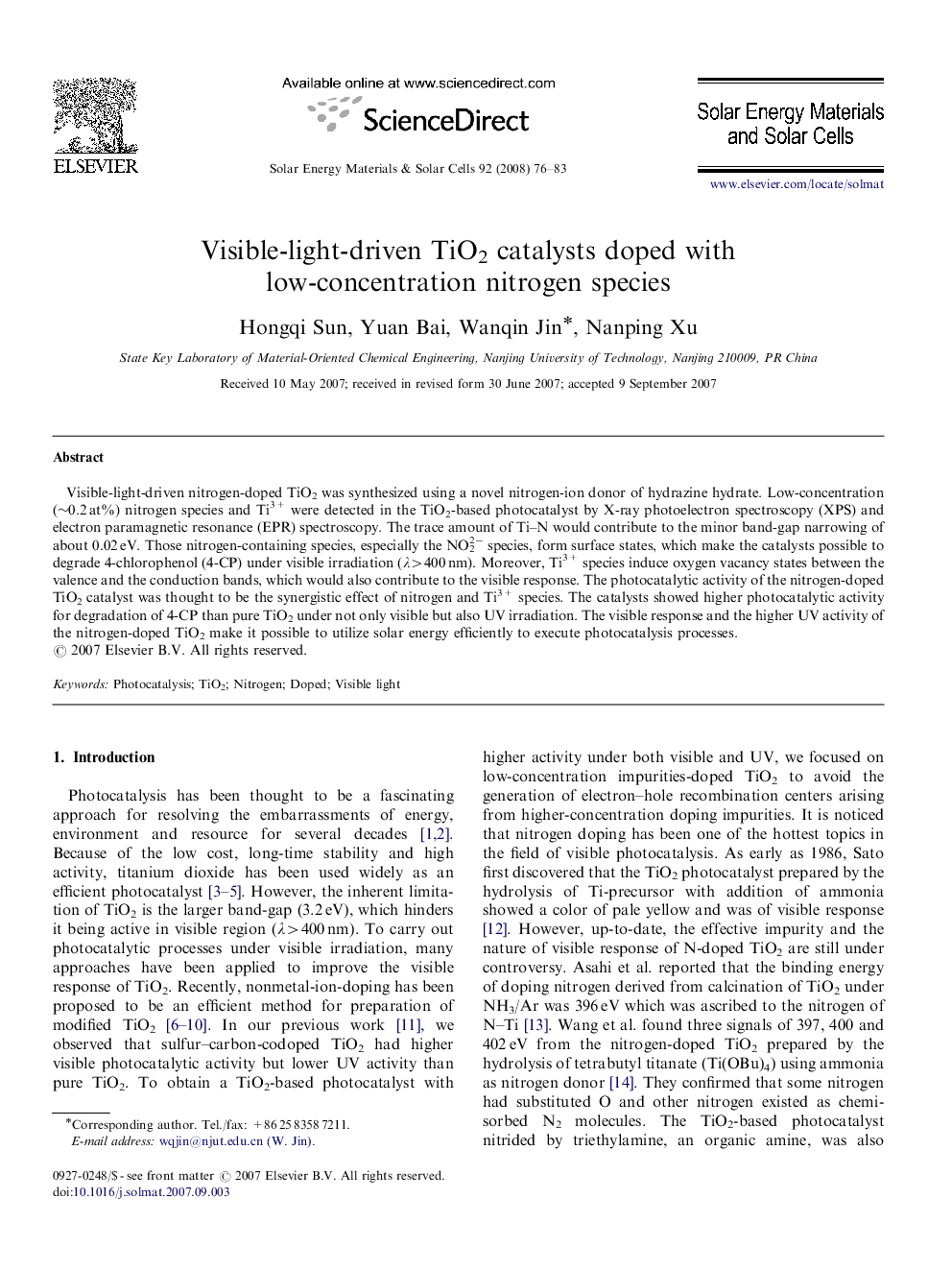| Article ID | Journal | Published Year | Pages | File Type |
|---|---|---|---|---|
| 80188 | Solar Energy Materials and Solar Cells | 2008 | 8 Pages |
Visible-light-driven nitrogen-doped TiO2 was synthesized using a novel nitrogen-ion donor of hydrazine hydrate. Low-concentration (∼0.2 at%) nitrogen species and Ti3+ were detected in the TiO2-based photocatalyst by X-ray photoelectron spectroscopy (XPS) and electron paramagnetic resonance (EPR) spectroscopy. The trace amount of Ti–N would contribute to the minor band-gap narrowing of about 0.02 eV. Those nitrogen-containing species, especially the NO22− species, form surface states, which make the catalysts possible to degrade 4-chlorophenol (4-CP) under visible irradiation (λ>400 nm). Moreover, Ti3+ species induce oxygen vacancy states between the valence and the conduction bands, which would also contribute to the visible response. The photocatalytic activity of the nitrogen-doped TiO2 catalyst was thought to be the synergistic effect of nitrogen and Ti3+ species. The catalysts showed higher photocatalytic activity for degradation of 4-CP than pure TiO2 under not only visible but also UV irradiation. The visible response and the higher UV activity of the nitrogen-doped TiO2 make it possible to utilize solar energy efficiently to execute photocatalysis processes.
